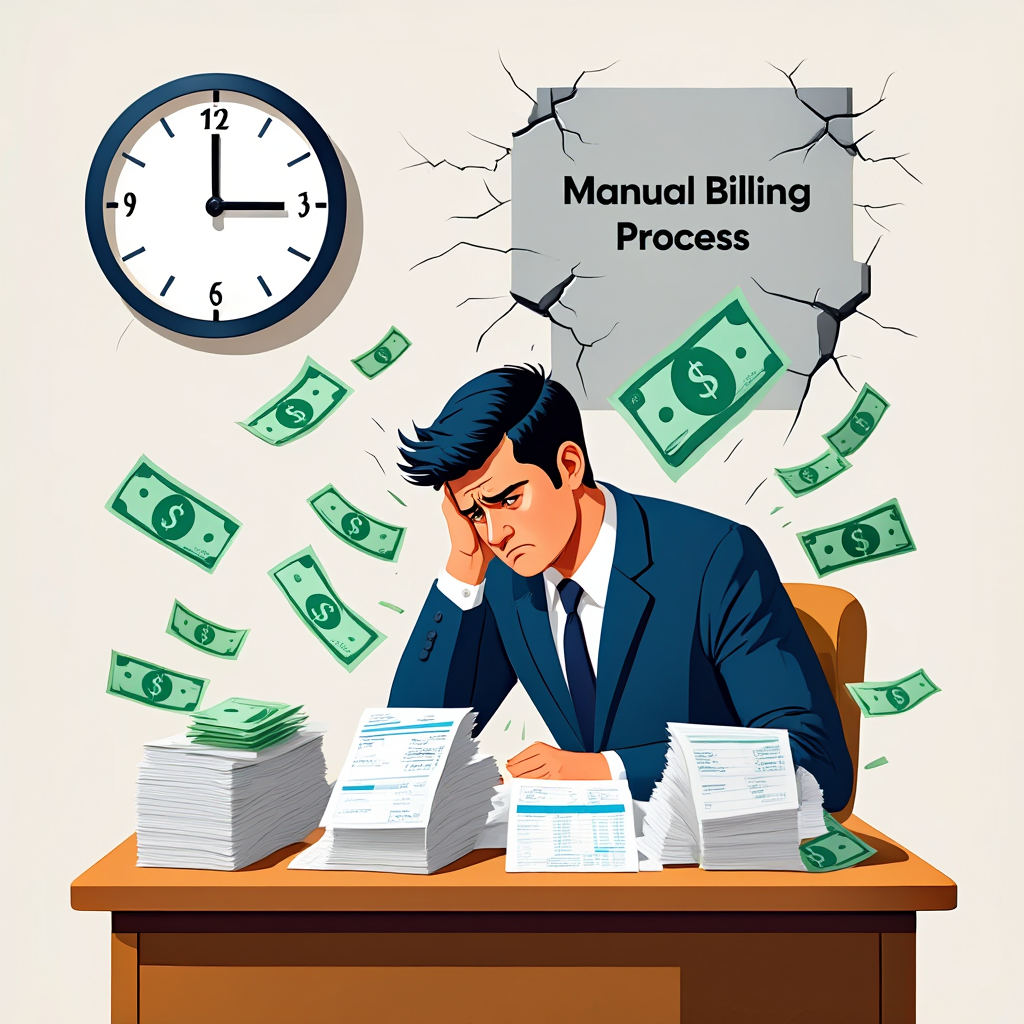The Hidden Costs of Manual Telecoms Billing
The Hidden Costs of Manual Telecoms Billing

The True Cost of Manual Telecoms Billing
For many telecoms resellers, billing is often viewed as a necessary administrative task rather than a strategic business function. However, the hidden costs of manual billing processes can significantly impact your bottom line and limit your growth potential. In this article, we’ll explore these hidden costs and how billing automation can transform your business.
Time is Money: The Administrative Burden
The most obvious cost of manual billing is time. Our research with UK telecoms resellers reveals that businesses handling billing manually spend an average of 15-20 hours per month on billing-related tasks:
- CDR Collection and Processing: 4-6 hours
- Rate Application and Verification: 3-4 hours
- Invoice Generation and Checking: 3-5 hours
- Invoice Distribution: 1-2 hours
- Payment Recording and Reconciliation: 2-3 hours
- Handling Customer Queries: 2-4 hours
For a business with staff costs of £20 per hour, that’s £300-£400 monthly spent just on billing administration – or £3,600-£4,800 annually. As your customer base grows, these costs scale rapidly.
Error Costs: The Revenue Leakage Problem
Manual billing processes are inherently error-prone. Common errors include:
- Missed call records
- Incorrect rate application
- Manual calculation errors
- Missed service charges
- Double billing (leading to customer disputes)
Our analysis of telecoms resellers transitioning from manual to automated billing reveals an average revenue leakage of 2-5% due to these errors. For a reseller billing £10,000 monthly, that represents £200-£500 in lost revenue every month, or £2,400-£6,000 annually.
Opportunity Cost: Growth Limitations
Perhaps the most significant hidden cost is the opportunity cost. When your team is bogged down in manual billing processes, they can’t focus on:
- Acquiring new customers
- Improving customer service
- Developing new offerings
- Strategic business planning
This opportunity cost is difficult to quantify but has a profound impact on your business’s growth trajectory.
Cash Flow Impact: Billing Delays
Manual billing typically leads to slower billing cycles. Many resellers using manual processes bill 5-10 days after month-end, compared to 1-2 days with automated systems. This delay directly impacts cash flow and can create cascading financial effects.
The Automation Advantage: ROI Analysis
Automating your billing process addresses all these hidden costs:
- Time Savings: Reduce billing time by 70-90%
- Error Reduction: Minimize revenue leakage by 90-95%
- Faster Billing Cycles: Bill within 1-2 days of month-end
- Improved Customer Experience: Professional, consistent billing
- Scalability: Handle growth without proportional cost increases
Case Study: Midlands Telecom
After implementing our automated billing platform, Midlands Telecom:
- Reduced billing time from 18 hours to 2 hours monthly
- Eliminated billing errors, recovering £350 monthly in previously missed revenue
- Accelerated their billing cycle by 7 days
- Redeployed staff to customer acquisition, adding 15 new customers in 6 months
Calculating Your ROI
To understand the potential return on investment for your business, consider:
- Current time spent on billing × hourly staff cost
- Estimated revenue leakage (2-5% of monthly billing)
- Value of improved cash flow (earlier payment receipt)
- Growth opportunity from redeployed resources
For most resellers, automated billing systems pay for themselves within 3-6 months purely on direct cost savings, before even considering growth benefits.
Conclusion: Billing as a Strategic Asset
By eliminating the hidden costs of manual billing, automation transforms billing from an administrative burden into a strategic business asset that supports growth, improves customer satisfaction, and strengthens your bottom line.
Ready to explore how automated billing could benefit your telecoms business? Contact us for a personalized ROI analysis.